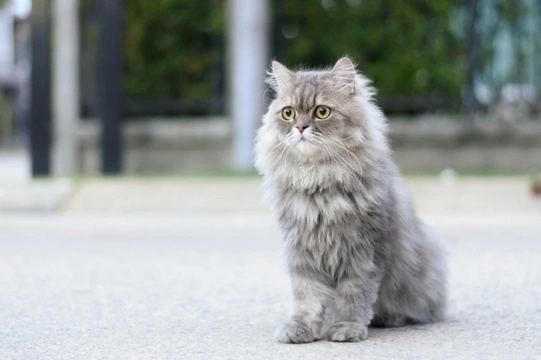
Brachycephalic ocular syndrome in Persian cats
The Persian cat is one of the UK’s most popular pedigree cat breeds and one that is instantly recognisable, thanks to their flattened faces. This trait is known and being brachycephalic, and this is a trait that we’ve only seen in cats in significant numbers at all for around 70 years.
The Persian breed itself has been around much longer than this, but they used to have delicate but still regular-shaped noses like other cats; and some Persians retain this appearance today, and are known as “doll-faced” Persian cats as a result.
That flattened face that we recognise so easily today was actually introduced to the breed and reinforced to become the dominant breed trait as a result of selective breeding on the part of humans; and it would not have naturally become dominant in cats without human intervention.
That’s because it gives cats a number of evolutionary disadvantages that make it harder for them to take care of themselves and that would threaten their chances of survival in the wild.
Breathing problems are prominent within the Persian cat breed as a result, and how acute they are relates directly to how flat the cat’s face is, and how narrow their nostrils. This means that those with very flat faces are most apt to suffer from respiratory problems, and find it hard to cope in the heat.
Flat faces can also affect the eyes, and increase the risks of such cats having a number of eye problems too, and when a certain range of these appear in combination as a result of certain physical traits and their secondary effects, this is known as brachycephalic ocular syndrome or BOS.
Persian cats with particularly flat faces may suffer from brachycephalic ocular syndrome as well as breathing problems – but what is Persian brachycephalic ocular syndrome, and what does it mean for affected cats? Read on to find out more about Persian cats and brachycephalic ocular syndrome.
What is brachycephalic ocular syndrome in Persian cats?
Brachycephalic ocular syndrome or BOS is the term used for a number of different eye conditions that are caused by the flat-faced appearance of the Persian cat. In cats, the Persian is the breed most widely associated with BOS, but it can also occur in other flat-faced breeds too, and in dog breeds with this same trait as well.
Exactly what aspects of brachycephalic ocular syndrome occur in any affected cat can vary, but the usual combination includes inversion of the eyelids (causing them to point downwards), tight eyelids, prominent or protruding eyes, shallow eye sockets, and potentially, problems like entropion or trichiasis, in which either the eyelid itself or the lashes respectively point inwards and rub the eye.
Other eye issues that directly pertain to the cat’s conformation may occur as part of Persian cat brachycephalic ocular syndrome too, but those are the most common.
How would I know if my Persian cat had brachycephalic ocular syndrome?
Persian cats whose nose noticeably protrudes when viewed side-on and whose eyes are not overly prominent or bulging are far less likely to suffer from BOS, or to suffer from it to an acute extent.
The flatter a Persian cat’s face is, the greater the impact this has on the conformation of their eyes, the more risks and variables it introduces, and the greater the chances of them suffering from brachycephalic ocular syndrome overall.
If your cat has already been diagnosed with any of the individual eye problems mentioned earlier as relating to brachycephalic ocular syndrome, if they’re prone to eye injuries, or if they suffer from weepy eyes and tear staining, they may be diagnosed with BOS.
When you take your cat along to the vet, they can perform an examination and provide a diagnosis based on this, as the conformation and presence or propensity for specific eye problems are the basis of confirming or ruling out the condition in cats.
Can anything be done to treat brachycephalic ocular syndrome in Persian cats?
Whether or not your Persian cat need treatment for brachycephalic ocular syndrome depends on how acute it is and how it affects them. As BOS in Persian cats tends to occur in those with very flat faces and this trait also makes them prone to respiratory problems, sometimes your vet will need to consider the combined risks of their eye and respiratory problems in order to develop the appropriate treatment plan for both.
If your Persian cat has severe BOS and it causes them functional problems and has an impact on their day to day quality of life, your vet may recommend one of a number of surgeries to resolve certain issues.
This may mean adjusting the angle of the eyelids, but not all of the problems that can come with BOS in Persians can be corrected; for instance, if your cat’s eyes are very prominent, this cannot be altered.
Another factor to bear in mind is that BOS in Persians and the conformation that causes it will likely be passed onto any offspring of affected cats, and so they should not be used for breeding.



